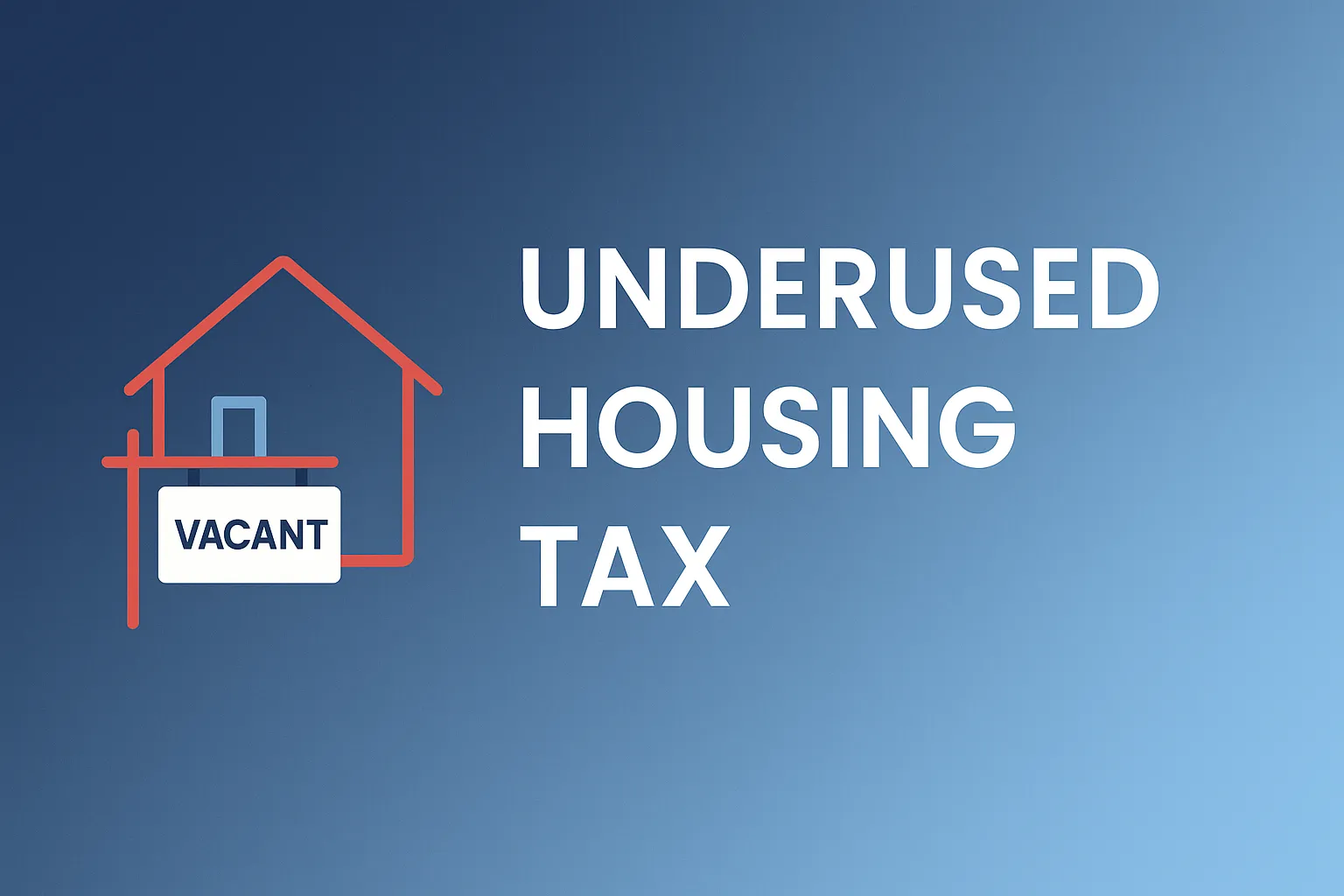Intro
Canada’s Underused Housing Tax (UHT) took effect January 1, 2022—and it continues evolving. Designed to curb foreign speculation and free up housing, it affects some non-resident owners—and in select cases, Canadian entities. This post breaks down who’s affected, key filing steps, exemptions, and how this intersects with provincial vacancy taxes.
Why It Matters
- Supports housing availability: UHT aims to discourage underutilized homes and make units available.
- 1% annual levy: Based on the property’s taxable value.
- Penalties aren’t small: Missed filings can trigger a $1,000 minimum penalty for individuals, $2,000 for corporations
- Intersecting rules: Municipal vacancy taxes (e.g., Toronto, Ottawa) operate separately—so owners may face multiple obligations .
Who It Matters For
- Non‑resident non‑Canadians: You must file unless exempted; 1% tax applies unless you meet use-based exemptions
- Certain Canadian entities (e.g. private corporations, trusts, partnerships): You may need to file unless you’re classified as a “specified Canadian” entity
- Joint ownerships: Each “affected owner” must file separately—even co‑owners
- Ontario homeowners: If you’re a foreign owner or hold property through certain entities, this federal obligation applies in addition to any municipal taxes.
Key Steps & Timing
1. Determine Your Status
- Excluded owners: Canadian individuals, publicly traded Canadian corporations, registered charities, Indigenous bodies, specified Canadian entities
- Affected owners: Non-residents, private corporations, partnerships, trustees, and more
2. Identify Reportable Properties
- Includes houses, duplexes, triplexes, condo units (≤3 units total)
- Larger buildings like apartment complexes don’t apply.
3. File by April 30
- Deadline is April 30 for the previous calendar year
- File Form UHT‑2900 separately for each property and, if multiple co‑owners, for each owner
4. Pay if No Exemption
- Affected owners who don’t qualify for exemptions owe 1% of taxable value (assessed value or sale price, or FMV if elected)
5. Claim Exemptions
Common exemptions include:
- Principal residence or occupied by the owner/close relative.
- Qualifying occupancy—e.g. rented arm’s‑length at fair rent for ≥180 days.
- Property under renovation, uninhabitable, or newly acquired/built.
- Vacation property used for at least 28 days, in prescribed zones.
6. Avoid Penalties & Interest
- Late or missing returns: $1,000+ minimum penalty (individual), $2,000 (corporate), plus 5% of tax plus 3% per month late .
- Interest on unpaid amounts .
Real‑Life Scenario
A U.S. investor owns a triplex in Toronto and uses it as a vacation rental for 30 days a year.
- ✅ Files UHT return by April 30.
- ❌ Doesn’t qualify for “qualifying occupancy” (needs 180 days) — so owes 1% tax.
- Also must file Toronto’s VHT declaration and pay if over 183-day vacancy
FAQs
1. Are Canadian homeowners exempt?
Most Canadian individuals and specified entities are excluded and don’t need to file—but exceptions exist for some trusts, private corporations, or partnerships
2. What if I share ownership?
Each affected owner must file separately, regardless of ownership percentage.
3. How do exemptions work?
You must file to claim an exemption—even if you won’t owe tax.
Conclusion
The UHT is a federal obligation that runs parallel to provincial and municipal taxes. It primarily targets non‑resident and certain entity owners, with a firm April 30 deadline each year. Proper classification, thoughtful exemption claims, and timely filing/payments are essential to avoid stiff penalties. And if you’re in Ontario and already navigating local vacancy taxes, stay organized to tackle both systems seamlessly.

